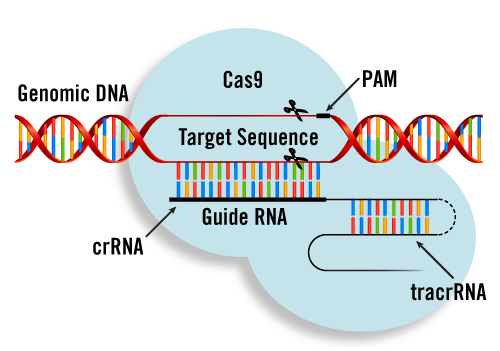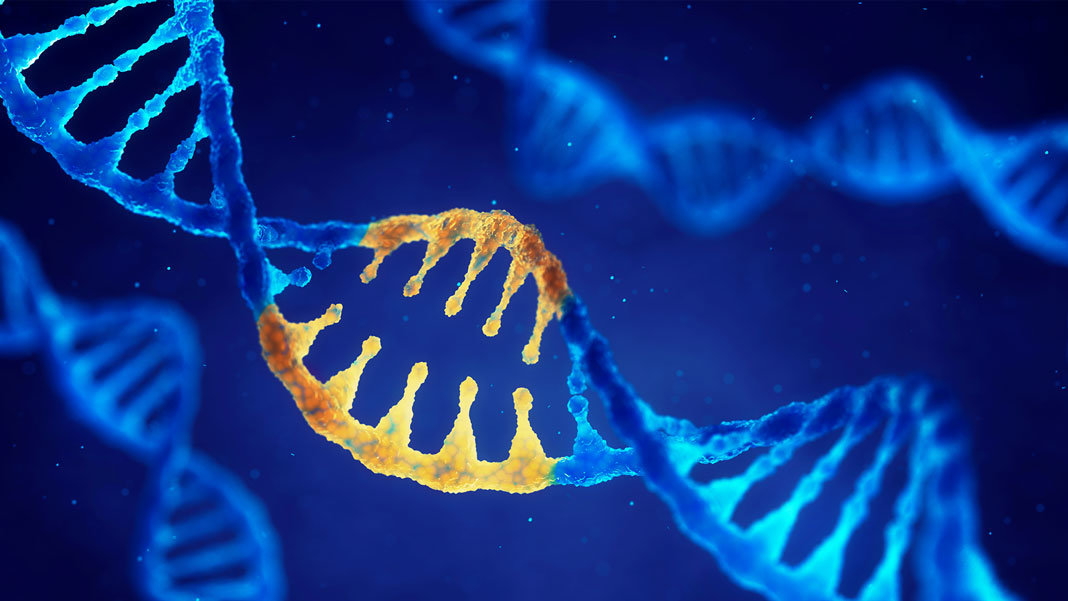Cancer is an abnormal growth of cells that have the potential to invade in different body parts. It is the most leading cause of deaths in different countries. Treatment for various cancers includes surgery, radiotherapy, chemotherapy, targeted therapy, radiofrequency ablation, chemical ablation, radioactive stent, percutaneous ethanol injection, anti-angiogenesis.
However, CRISPR (Clustered regularly interspaced short palindromic repeats) Cas9, is the most advanced technique used for various cancer treatments, including breast, esophageal, ovarian, and even lung cancer. It is the most potent technique use for genome editing. It usually consists of palindromic repeats first taken from bacteria E.coli and many other bacteria. It is considered to be part of an adaptive immune system of bacteria. So, scientists find that CRISPR and its related protein (Cas9) play an essential role in protecting bacteria against foreign viral DNA. Cas9 is a nuclease that cleaves the DNA sequence. Cas9 (CRISPR associated protein 9) plays a vital role in the immunological defense of certain bacteria against DNA viruses.
Its specific work is to cut DNA and, therefore, can alter a cell’s genome. Two relevant RNAs that are involved in guiding the Cas protein to the viral DNA and cleave it are crRNA and tracrRNA. These RNAs are combined with single-guide RNA (sgRNA), usually, recognize adjacent protospacer motif (PAM). Itis a twenty long nucleotide sequence consists of NGG or NAG sequence.in this technique, first in the host cell DNA is unwinded, then binding to the PAM sequence and DNA-sgRNA hybrid formation occur. Two different mechanisms are used for the repair of a double-stranded break in DNA are Non-homologues end joining (NHEJ) and homology-directed repair (HDR). In NHEJ, chances of error are more because of insertions or deletions, which can lead to frameshift mutations, which leads to loss-of-function.

On the other hand, homology-directed repair (HDR) uses donor DNA templates to reconstruct cleaved DNA. HDR is involved in precise editing. The binding efficiency of Cas9, determine the strength of the nuclease activity. Many other CRISPR Type II nucleases are present that use alternative PAM sites, and many other target RNAs have developed. By NHEJ and HDR, several deletions insertions and silencing of genes done that can develop into cancer.
Two types of therapies can be used to treat various cancers, which involve the CRISPR Cas technique. One is Adoptive cell therapy (ACT), which is an immunotherapy that consists of the isolation and then an in-vitro proliferation of tumor-specific T-cells, and reintroduction of these T cells into the host. One of the approaches of ACT is the use of T-cells that have produced to recognize and attack tumor cells effectively. It involves the deletion of the programmed cell death-1 receptor (PD-1) gene in T-cells. The interaction between PD-1 and its ligand PD-L1 inhibits T-lymphocyte proliferation, survival, and effector functions induce apoptosis of tumor-specific T-cells, as well as the resistance of tumor cells to cytolytic T-lymphocyte attack. This approach involves CRISPR/Cas9-mediated PD-1 gene deletion in T-cells and their reintroduction into patients, where the gene-deleted T-cell will involve in tumor eradication.
The second one is anticancer immune therapy that usually contributes to the treatment of hematological and solid cancers, which is based on the production of next-generation CAR T-cells that expresses as tumor-targeting receptors. CAR T-cell therapy targets the CD19 antigen that has been successful due to its specific expression in B cells and B cell leukemia.
Although ACT therapies have shown best results in clinical trials on leukemia and lymphoma and CAR T therapy, they have shown the best results in the case of B cell acute lymphoblastic leukemia in pediatric and young adults.
Several cancers have been treated using the ACT approach, which includes esophageal cancer, bladder cancer, prostate cancer, renal cell carcinoma, long cells lung cancer, and EBV positive advanced-stage malignancies.

Various types of cancers can treat by CRISPR Cas9, including esophageal, lung, colon, prostate, and cervical cancer. Recently Chinese scientists underwent different clinical trials for the treatment of esophageal cancer using CRISPR. The oncoprotein E6 usually expressed in tumor cases only. Scientists use CRISPR Cas 9 to treat cervical cancer by using adeno- associated virus vector that carries a small guide RNA (sgRNA) for E6. Scientists tried to express the Cas9 gene in three cervical cancers cell lines, including HeLa cell line, HCS-2, and SKG-1. By utilizing these cell lines, we can examine the gene expression, gene mutation, cell apoptosis, cell proliferation, and even the level of proteins. And they found that mutation is present in the E6 gene that is the leading cause of cervical cancer. Then these cells are transduced, and they have reduced expression of E6 and increased expression of the p53 Tumor Suppressor gene. It indicated that by targeting E6 by CRISPR, we could reduce cervical cancer chances.
There are certain limitations to this technique also. When scientists successfully targeted uPAR by the CRISPR Cas9 system along with two individual sgRNAs in two cancer patients. The knockout of uPAR inhibited the proliferation of the cell, its migration, and invasion. uPAR also plays a vital role in causing drug resistance.
Scientists are still not saying CRISPR is the ultimate cure for cancer, but various studies conducted around the world show that it may be the most potent cure against cancer in the future. It shows that CRISPR–Cas9 delivery systems are the most effective way of gene editing that may improve cancer therapeutics and play a leading role in cancer treatment in upcoming years without any surgeries.
Also, give a read Transhances: advances in longevity medicines

Arooba Azeem is a student of BS biochemistry, Quaid e Azam University Islamabad. She is an active member of the management team(QDLs) of debating and literary societies of her University. Her particular hobbies are cooking and book reading.

